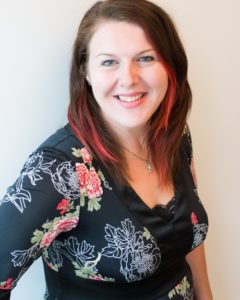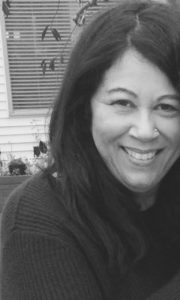Recently, I shared five tips for writing more powerful personal essays in my #5onFri post, 5 Hacks to Make Your CNF More Compelling. My post this week offers some insights on creative nonfiction’s genre-bending forms, and how working with them can lead to more interesting and innovative work.
This has certainly been the case for me. Once I started pushing the boundaries of linear storytelling my personal essays were much stronger. They began to find literary homes and win awards. It’s been the case, too, for my student, Rowan Smith-McCandless, who recently won Room magazine’s 2017 CNF contest for her stellar hermit crab essay, “A Map of the World”.
Check out Rowan’s answers to 5 questions I asked about her discoveries exploring CNF for the first time in my course, and the genre’s more experimental forms.
And if experimental CNF is your jam (or you think it might be!), the next session of my CNF Outliers e-course opens on Monday, June 19. Space is limited, so please get in touch to confirm availability.
1) What positive discoveries did you make as you shifted from writing fiction to personal essays?
Foremost, I’ve discovered that I can complete a personal essay, that it’s possible to move past fear and my inner critic and embrace rather than abandon my attempts at writing personal stories. As well, I’ve found so many wonderful tools and craft techniques that enhance my creativity and complement my process as a writer; skills that readily transfer between genres.
2) What drew you to the CNF genre, and what do you find rewarding about it as a writer and reader?
A few years ago, I read “The Pain Scale” by Eula Biss; a powerful, beautifully written contemplation of the author’s experience with physical pain. I fell in love with CNF, both as a reader and writer! I’m drawn to the genre’s freedom of expression, how fact meets form meets improvisation.
3) What impact has working with CNF’s more experimental forms had on your storytelling — both process and product?
CNF’s more experimental forms have had a profound influence on my storytelling. I’m more thoughtful as a writer, more considerate of structure and how best to craft my writing, whether it be CNF or fiction. The lyric essay, the prose poem, the hermit crab and braided essay have opened channels of self-expression, freed me to write personal stories, something I’ve struggled with in the past because of the inherent vulnerability, the exploration of difficult subject matter.
In speaking with other writers, I’ve discovered that many share the same fears. What CNF’s “outlier” forms offer are the tools to get those stories onto the written page. The genre connects the personal with the universal, questions as much as it examines. It’s lyrical and poetic—jazz and a Jackson Pollock painting expressed in written form. Now, who wouldn’t find that exciting?
4) What tips would you offer writers who want to move into writing CNF but feel some fear about delving into sharing personal stories?
First, I’d say to persevere but consider pacing. It’s okay to put a piece aside for a while if it gets too intense. I’d suggest becoming familiar with the more experimental forms of the genre; the hermit crab essay is a personal favourite as the structure provides support when dealing with difficult subject matter! Build community. Connect with kindred spirits. Have a latte. Hug your dog. Join a writer’s group. Talk to people you trust about those fears. Consider finding a mentor who understands and writes within the genre.
5) What did you learn about fear and writing in the course?
I learned that fear is a beast that other writers struggle with as well, whether it be fear of vulnerability, of hurting loved ones, of breaking family rules or societal expectations. I’ve discovered that there are ways to deal with that inner critic that tries to silence our storytelling. As well, that writing within the sub-genres of CNF, such as the hermit crab essay, can liberate a writer from those fears.
 Nicole Breit is a poet, essayist, and creative writing teacher who lives on British Columbia’s gorgeous Sunshine Coast. In 2016 she won Room magazine’s CNF contest and her lyric essay, Spectrum, was the winner of the 2016 CNFC/carte blanche creative non-fiction award. Visit the CNF Outliers landing page to learn more about Nicole’s popular e-course. To sign up for the June 19-July 24 session, please email nicole(at)nicolebreit.com.
Nicole Breit is a poet, essayist, and creative writing teacher who lives on British Columbia’s gorgeous Sunshine Coast. In 2016 she won Room magazine’s CNF contest and her lyric essay, Spectrum, was the winner of the 2016 CNFC/carte blanche creative non-fiction award. Visit the CNF Outliers landing page to learn more about Nicole’s popular e-course. To sign up for the June 19-July 24 session, please email nicole(at)nicolebreit.com.
 Storyteller, thrift-store junkie and chai tea lover, Rowan Smith-McCandless writes and lives in Winnipeg. In 2015, her short story “Whale Song” placed second in Room magazine’s Annual Poetry and Fiction Contest. Her short story “Castaways” will be published this summer, having placed second in Prairie Fire’s 2016 annual Fiction Contest. Most recently, her CNF piece, “A Map Of The World” received first place in Room magazine’s 2017 Creative Nonfiction contest.
Storyteller, thrift-store junkie and chai tea lover, Rowan Smith-McCandless writes and lives in Winnipeg. In 2015, her short story “Whale Song” placed second in Room magazine’s Annual Poetry and Fiction Contest. Her short story “Castaways” will be published this summer, having placed second in Prairie Fire’s 2016 annual Fiction Contest. Most recently, her CNF piece, “A Map Of The World” received first place in Room magazine’s 2017 Creative Nonfiction contest.







